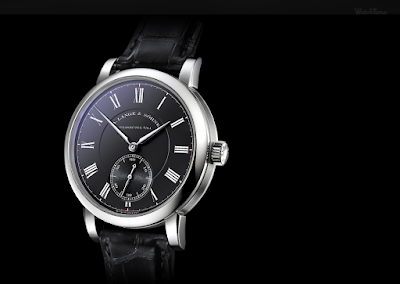The Story Behind The Unsoul Things
The story behind an Object . And values learned from these objects.
Tuesday, 10 July 2018
Saturday, 7 July 2018
The Unsoul Watch
The history of watches began in 16th century Europe, where watches evolved from portable spring-driven clocks, which first appeared in the 15th century. The watch which developed from the 16th century to the mid 20th century was a mechanical device, powered by winding a mainspring which turned gears and then moved the hands, and kept time with a rotating balance wheel. The invention of the quartz watch in the 1960s, which ran on electricity and kept time with a vibrating quartz crystal, proved a radical departure for the industry. During the 1980s quartz watches took over the market from mechanical watches, an event referred to as the "quartz crisis". Although mechanical watches still sell at the high end of the market, the vast majority of watches now have quartz movements.
One account of the origin of the word "watch" is that it came from the Old English word woeccewhich meant "watchman", because it was used by town watchmen to keep track of their shifts.Another says that the term came from 17th century sailors, who used the new mechanisms to time the length of their shipboard watches (duty shifts)
Values learned from watch:-
- Even a stopped clock is right twice a day.
- You have to cherish things in a different way when you know the clock is ticking, you are under pressure.
- Time is beyond our control, and the clock keeps ticking regardless of how we lead our lives. Priority management is the answer to maximizing the time we have.
- Enjoy every moment of life like you only have 24 hours left.
CONCLUSION
* A Watch is a great invention which not only shows us the correct time But it also teaches us many valuable lessons of Life which we must follow them to enjoy every moment of your Life.
Thank You ☺️
Friday, 6 July 2018
The Unsoul Glass
Glass was first made about 5,000 years ago, in Western Asia, Egypt, and Mycenae, on Crete, an island in the Aegean Sea. Today the word “glass” is associated with transparency, but the earliest glass was an opaque material. Lustrous, easy to work when heated, ancient glass was made to resemble lapis lazuli, turquoise, and other precious stones. Like those precious stones, glass was used for ornaments worn by pharaohs, funerary goods, and other very special purposes.The production of glass vessels began in Mesopotamia and Egypt in about the sixteenth century BCE. During Egypt’s 18th Dynasty (1570 BCE), glass vessels produced under the patronage of the royal family were used as gifts to powerful persons. The footed cup of core-formed glass in
this exhibition is one example. Given to a member to the nobility, it was doubtless cherished and may have had ritual uses.
Wine and other alcoholic beverages have long been part of exalted occasions, washing away pollution and enhancing rulers' power. The patella cup (so called because it is shaped like a kneecap), it was a holy vessel for serving sacred wine to the gods. Millefiori glass, its name derived from the Italian for “thousand flowers,” does look like a thousand flowers in bloom. Such works beauty expressed reverence for the gods.When transparent glass began to be made from about the eighth century BCE, its transparency opened up a new dimension: enjoying the sight of the contents of the glass. Perhaps that is why vessels that had been made of metal or clay were replaced by glass vessels. For example, the rhyton terminating in a lion’s head was a vessel designed for pouring liquids; through it, a liquid filled with animal power would be offered to the gods or the king during rituals.
This first section of the exhibition introduces wine vessels used in offerings to exalted beings.
this exhibition is one example. Given to a member to the nobility, it was doubtless cherished and may have had ritual uses.
Wine and other alcoholic beverages have long been part of exalted occasions, washing away pollution and enhancing rulers' power. The patella cup (so called because it is shaped like a kneecap), it was a holy vessel for serving sacred wine to the gods. Millefiori glass, its name derived from the Italian for “thousand flowers,” does look like a thousand flowers in bloom. Such works beauty expressed reverence for the gods.When transparent glass began to be made from about the eighth century BCE, its transparency opened up a new dimension: enjoying the sight of the contents of the glass. Perhaps that is why vessels that had been made of metal or clay were replaced by glass vessels. For example, the rhyton terminating in a lion’s head was a vessel designed for pouring liquids; through it, a liquid filled with animal power would be offered to the gods or the king during rituals.
This first section of the exhibition introduces wine vessels used in offerings to exalted beings.
Conclusion
* A glass is a great invention which helps us to drink liquids. But it also teaches us to live our life in a transparent way like a glass so that everyone can enjoy with us without any discrimination of caste, age, sex, colour etc.
THANK YOU ☺️
Subscribe to:
Posts (Atom)
-
The history of watches began in 16th century Europe, where watches evolved from portable spring-driven clocks, which first appeared ...
-
Glass was first made about 5,000 years ago, in Western Asia, Egypt, and Mycenae, on Crete, an island in the Aegean Sea. Today the word “g...









